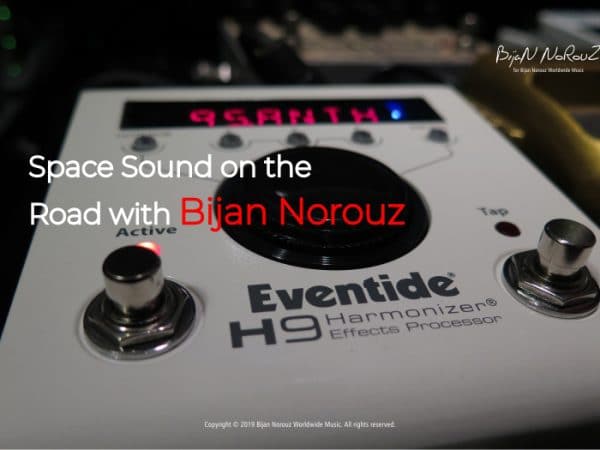
2020-02-15
Music and Science
Description
Our point of departure is the idea that science or, more accurately, the sciences can help us to make sense of music and its significance in our lives.
Music exists in complex and diverse forms across historical time and within and across different societies; music is indisputably a cultural phenomenon but our musicality is grounded in our biology; we need to draw on the sciences to address music’s biological materiality, but we must also be attuned to the distinctive functional and discursive properties that are embodied in different cultures’ musics.
Hence the need for this Bijan Norouz Worldwide Music which is intended to provide a peer-reviewed platform for researchers to communicate important new insights in music research from the full spectrum of relevant scientific and scholarly perspectives to the widest possible audience.
We aim to publish research across the field of music and science as broadly conceived, encompassing studies in cognition, neuroscience and psychoacoustics; development and education; philosophy and aesthetics; ethnomusicology and music sociology; archaeology and ethology; music theory, analysis and historical studies; performance science and practice-based research; computational approaches and studies in digital culture; acoustics, sound studies, and soundscape studies; music therapy; and clinical implications and approaches, including psychoneuroimmunology, health and well-being.
Our goal is to be truly interdisciplinary: to give researchers from the many different scientific traditions that have been applied to music the opportunity to communicate with and to learn from each other, while encouraging dialogue with music scholars whose work is situated in artistic, per formative or humanistic domains. In short, we aim to publish research from any discipline or perspective that can illuminate or that can be illuminated by scientific approaches to understanding music.
The Scientific Benefits of Music
Did you know that listening to music is good for your health?
Crank up the tunes and blast those beats, because the results are in– music is good for you.
We know the healing power of music.
Music can soothe the brokenhearted, motivate runners and kickoff the most epic dance parties, but it also has some serious scientific benefits for our health and overall well being.
Listening to music has been shown to improve memory functioning, increase rate of healing, improve your workouts and more.
Music and its effect on memory has been a heated debate in the scientific world, but researchers now have evidence that the processing of music and language, specifically memorizing information, rely on some of the same brain systems.
Researchers have also uncovered evidence that suggests the music we heard as teenagers has a greater emotional bind to our brain than anything we’ll listen to as adults. This idea of musical nostalgia is a fun exercise for anyone.
The Best Music to Listen to For Optimal Productivity, According to Science
Oftentimes we have innumerable distractions at work competing for our attention. Luckily, music can help put us back on a more productive track.
But when it comes to tasks that require more brainpower, finding that perfect playlist is not so easy. Luckily, we have science at our disposal to help.
Based on some of what we know about how music affects productivity, you should try funneling this kind of music through your headphones the next time you’re feeling unproductive:
- Songs that include sounds of nature.
- Songs you enjoy.
- Listening to music you like can make you feel better.
Music and Emotion
The study of ‘music and emotion’ seeks to understand the psychological relationship between human affect and music. It is a branch of music psychology with numerous areas of study, including the nature of emotional reactions to music, how characteristics of the listener may determine which emotions are felt, and which components of a musical composition or performance may elicit certain reactions.
The field draws upon, and has significant implications for, such areas as philosophy, musicology, music therapy, music theory and aesthetics, as well as the acts of musical composition and performance.
Conveying Emotion Through Music
The ability to perceive emotion in music is said to develop early in childhood, and improve significantly throughout development. The capacity to perceive emotion in music is also subject to cultural influences, and both similarities and differences in emotion perception have been observed in cross-cultural studies.
Empirical research has looked at which emotions can be conveyed as well as what structural factors in music help contribute to the perceived emotional expression.
There are two schools of thought on how we interpret emotion in music.
The cognitivists’ approach argues that music simply displays an emotion, but does not allow for the personal experience of emotion in the listener.
It has been argued that the emotion experienced from a piece of music is a multiplicative function of structural features, performance features, listener features and contextual features of the piece, shown as:
Experienced Emotion = Structural features × Performance features × Listener features × Contextual features.
Where:
- Structural features = Segmental features × Suprasegmental features.
- Performance features = Performer skill × Performer state.
- Listener features = Musical expertise × Stable disposition × Current motivation.
- Contextual features = Location × Event.
Structural Features
Structural features are divided into two parts, segmental features and suprasegmental features. Segmental features are the individual sounds or tones that make up the music; this includes acoustic structures such as duration, amplitude, and pitch. Suprasegmental features are the foundational structures of a piece, such as melody, tempo and rhythm.
There are a number of specific musical features that are highly associated with particular emotions.
Within the factors affecting emotional expression in music, tempo is typically regarded as the most important, but a number of other factors, such as mode, loudness, and melody, also influence the emotional valence of the piece.
Performance Features
Performance features refers to the manner in which a piece of music is executed by the performer(s). These are broken into two categories, performer skills and performer state. Performer skills are the compound ability and appearance of the performer; including physical appearance, reputation and technical skills. The performer state is the interpretation, motivation, and stage presence of the performer.
Listener Features
Listener features refers to the individual and social identity of the listener(s). This includes their personality, age, knowledge of music, and motivation to listen to the music.
Evidence for Emotion in Music
There has been a bulk of evidence that listeners can identify specific emotions with certain types of music, but there has been less concrete evidence that music may elicit emotions.
This is due to the fact that elicited emotion is subjective; and thus, it is difficult to find a valid criterion to study it.
Elicited and conveyed emotion in music is usually understood from three types of evidence: self-report, physiological responses, and expressive behavior. Researchers use one or a combination of these methods to investigate emotional reactions to music.
Source: Music Video










Comments are closed.